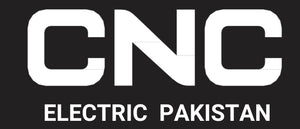Lithium-Ion Battery vs Lead Acid Cost Analysis
Lithium-ion battery is more than just a power source, it’s a smart investment. Choosing the right battery can save you years of money and maintenance. This blog compares Lithium battery and Lead Acid cost in detail. We’ll uncover which one offers real long-term value beyond just the price. Did you know? One good battery decision can cut energy bills by 30%. Or could the wrong battery cost double over time? You'll discover the facts most people overlook, and why it matters. By the end, you’ll be confident about which battery pays off.
Cost Comparison Overview of Lithium Battery and Lead Acid
When choosing between batteries, cost matters the most. The Lithium battery has a higher upfront cost. However, lead-acid batteries seem cheaper at first. But the initial price isn’t the full story here. Let’s break down the long-term savings and investment returns.
-
Lithium-ion lasts 2-3 times longer than Lead Acid
-
Lead-acid batteries need more frequent replacements and maintenance
-
Overall, Lithium battery reduces the lifetime ownership cost
So, the true value appears over the battery’s entire lifespan.
Purchase Price Difference Between the Battery Types
At first glance, the price gap seems significant. Lithium batteries often cost more than Lead batteries. A typical Lithium unit may cost 2-4 times more. However, this price includes advanced technology and performance. Lead-acid batteries are older, bulkier, and less efficient. Therefore, initial savings may lead to hidden long-term costs.
Cost per Cycle in Lithium-Ion vs Lead-Acid Batteries
Cost per cycle is an important financial metric. Lithium batteries offer thousands of cycles without major degradation. Lead-acid batteries usually fail under deep cycling. Thus, the cost per usable cycle is much lower for Lithium-Ion. This long-term benefit offsets the initial purchase price.
Maintenance and Operation Cost of Lithium Battery
Besides purchase cost, maintenance plays a key role. Lithium-ion batteries need almost zero regular maintenance. In contrast, lead-acid batteries need water topping and terminal checks. These tasks take time and may need trained staff. Over the years, this has added to the overall ownership cost.
Energy Efficiency and Charging Costs
Charging efficiency directly affects energy bills. Lithium batteries are highly efficient batteries. Lead Acid lags with only 80–85% efficiency. That means more electricity is wasted with lead-acid. Over time, these losses become costly, especially in large setups.
Temperature Impact and Cost of Cooling Systems
Lead-acid batteries are sensitive to heat and cold. This requires extra cooling or heating systems. In contrast, Lithium batteries handle temperature changes better. So, you save money on external environmental control units.
Lifespan Cost Evaluation: Lithium-Ion vs Lead Acid
A longer lifespan means fewer replacements and downtime. Lithium batteries can last up to 10 years or more. Lead-acid batteries, however, often last only 3 to 5 years. That’s double or even triple the replacement cost for Lead Acid.
Replacement Frequency and Its Financial Impact
Frequent replacement increases labor and logistic costs. A Lithium battery setup drastically reduces downtime. Fewer replacements also lower disposal and recycling costs. This benefit is huge in industrial and solar settings.
Cost of Battery Disposal and Recycling
Proper disposal of batteries costs money and time. Lead Acid contains harmful materials and needs careful recycling. While Lithium battery also needs disposal, they’re lighter and more recyclable. This reduces long-term environmental and financial burden.
Application-Based Cost Benefits of Lithium Battery
Application choice often drives battery selection. For off-grid or solar systems, Lithium batteries give better results. It charges faster and stores energy more efficiently. In backup systems, Lithium offers reliable power without maintenance.
Commercial Use and ROI Analysis
In commercial setups, reliability is key to saving money. A Lithium battery provides consistent output without dips. Lead batteries may fail under continuous use or heat. So, Lithium’s reliability means fewer outages and higher ROI.
Residential Use: Long-Term Budget Friendliness
Homeowners also benefit from stable energy costs. Lithium batteries let users store solar energy efficiently. Lower bills and maintenance mean better household savings. Over 5 to 10 years, this leads to major financial advantages.
Hidden Costs of Lead-Acid Batteries
Cheaper batteries may carry hidden expenses. Lead-acid units are heavier and harder to install. These installation costs are often overlooked. Their weight also increases shipping and handling expenses.
Safety Risks and Indirect Expenses
Lead-acid batteries can leak or emit gases. That demands proper ventilation and safety systems. Lithium batteries are sealed, safer, and spill-proof. Fewer risks mean lower indirect safety-related costs.
Downtime Costs from Lead Acid Failures
Battery failure can halt operations or damage equipment. Lead-acid batteries degrade faster under heavy use. Downtime costs in business or critical setups can be huge. Lithium batteries minimise such risks and losses.
Performance Cost Ratio in Real-World Conditions
Performance and cost should always be balanced. Lithium batteries deliver steady voltage and faster charging. Lead Acid struggles under rapid discharge or heavy use. This results in inefficiency and performance loss.
Energy Density and Storage Space Costs
Lithium batteries store more energy in less space. That means lower storage and space costs. Lead-acid batteries are bulky and space-consuming. If space is expensive, Lithium offers real savings.
Scalability and Upgrade Expenses
When expanding systems, battery scalability matters a lot. Lithium battery setups are modular and easy to upgrade. Lead Acid may need a full system rework. This adds hidden upgrade and reinstallation costs.
Conclusion
Choosing between these batteries depends on usage needs. If you want short-term savings, Lead Acid seems cheaper. But for long-term use, the lithium-ion battery wins clearly. It offers lower lifecycle cost, fewer replacements, and better safety. While the upfront cost is high, the value adds over time. Lithium batteries pay back through efficiency and lifespan. For homes, industries, or solar systems, it’s a smart investment. Think long-term savings, not just immediate expenses.
